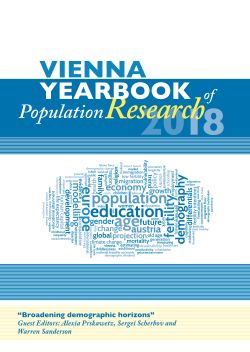
Vienna Yearbook of Population Research 2018, pp. 015-023, 2018/12/19
Broadening demographic horizons

Which of several alternative population forecasts is the “best” or the most plausible? In published work summarized here, we use Taylor’s law (TL) and its quadratic generalization to select the best among six alternative projections (by Statistics Norway) of Norwegian county population density. We consider two time scales: long term (1978–2010 as the historical basis for projections of 2011–2040) and short term (2006–2010 as the historical basis for projections of 2011–2015). We find that the short-term projections selected as “best” by TL are more closely aligned than the four other projections with the recent county density data, and reflect the current high rate of international net immigration to Norway. Our approach needs to be further tested using other data and demographic forecasts.